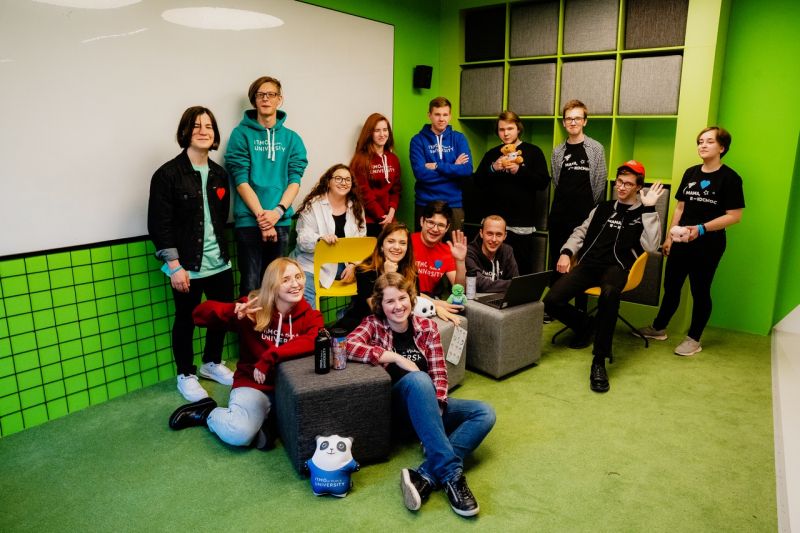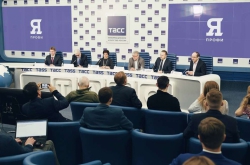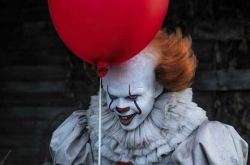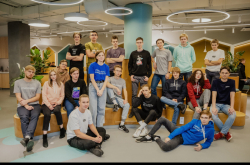ITMO.STARS 2020
The ITMO.STARS contest for gifted prospective students was held by ITMO University for the third time. It allows talented students to enroll in the university's programs on tuition-fee positions regardless of their Unified State Exam (USE) scores.
This year, 14 people from St. Petersburg, Yekaterinburg, Chelyabinsk, Khabarovsk, Simferopol, and other Russian cities became the winners. All of them presented their achievements to the contest committee: implemented projects, participation in conferences, winning at contests, and certificates of participation in international competitions.
Daniil Kazantsev, Yekaterinburg
Enrolled in the Information Systems and Technologies program at the Information Technologies and Programming Faculty
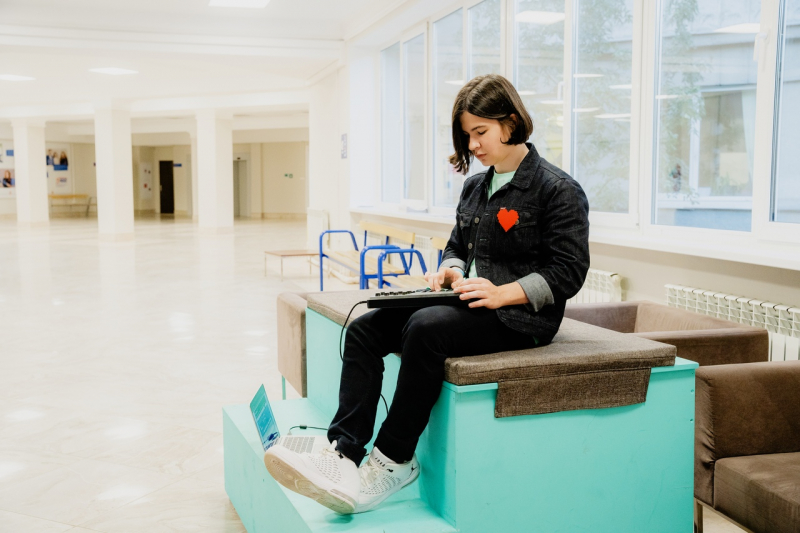
About the project and its idea
I have created a system that translates sign language into spoken language. It looks like a pair of elbow pads. But these pads track the signals of mechanical activity from the muscles of both arms, then the system analyzes them and determines which gesture is being made by the user’s hands at the moment, and translates these gestures into words. After that, thanks to the neural network, the system puts words in one complete sentence, displays them on the smartphone screen, and finally reads it aloud.
The idea of this device occurred to me after an accident that happened in my hometown: social workers took the children away from their hearing-impaired mother because they thought that her disability wouldn't let her take good care of them. I read about it and decided to do something to ensure that such situations would not repeat in the future.
It took two years to develop this system. I developed the product concept and the main technology for its implementation all on my own.
Project results
I presented my project at two conferences in the USA: Intel International Science and Engineering Fair (I won the Second Grand Award) and Google Science Fair for young scientists, where I ended up in the top five and received a grant to study abroad.
It allowed me to get a job offer, team resources, and investments for my project. Now, I plan to work further on the functionality and ergonomics of the system's custom components, train artificial intelligence, and enter mass production.
My product involves both software and hardware, so I had to learn a lot on my own from YouTube classes, courses on Coursera, and other Internet resources. I entered the university to deepen my theoretical knowledge in fields that are important for the development of this project. I am interested in getting a fundamental theoretical base in mathematics and programming so that in the future I could draw on this knowledge and not to google the possible solutions.
Antonina Konanykhina, St. Petersburg
Enrolled in the System and Applied Software program at the Faculty of Software Engineering and Computer Systems
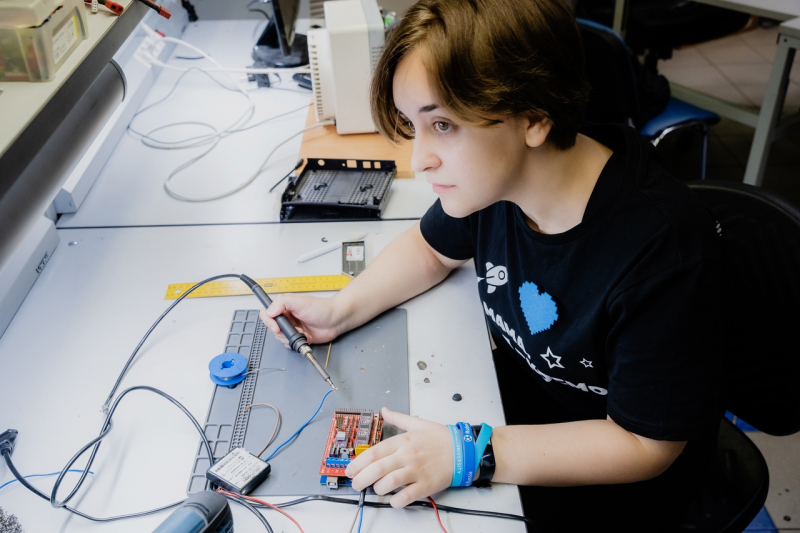
Robot show and other competitions
I am the winner of the RoboCup Asia-Pacific 2019 competition, which took place in Moscow this year. My category was called OnStage Advanced and our task was to put on a vivid show of robots using the latest technologies such as neural networks and computer vision. I was also nominated for the RoboCup 2019 world competition in Sydney in the Best Software Programming category. These are prestigious international robotics competitions, which aim to create a team of robot football players that can beat professional athletes by 2050.
My path to robotics
I’ve been engaged in robotics since my ninth grade when I joined the center of additional education for schoolchildren PFML # 239. I was also a member of the St. Petersburg’s team and last year, we were nominated for the Best Technical Interview in the RescueLine League at the National RoboCup Russia Open 2019 competition.
I find it more interesting to deal with the “filling” – software rather than hardware – and that's why I entered the Software Engineering and not Robotics program. I want to get a fundamental education, with an in-depth study of mathematics and programming. But at the same time, I like to solve more applied problems and get results that can be seen and touched, such as a robot.
“I want to help people – after all, this is what robotics is for”
I like what I do, and I also think this sphere is very promising. Now, I just want to focus on my studies because it is not so easy here. And then I plan to participate in hackathons and olympiads and create a new team to participate in the Robocup student league.
After my Bachelor’s studies, it will be interesting to delve into biomechatronics – robotic prostheses – and get into a Master’s program. I would like to engage in scientific projects and solve global problems. But most importantly, I want to help people – after all, this is what robotics is for.
Lev Kobelev, St. Petersburg
Enrolled in the Mobile and Network Technologies program at the Faculty of Infocommunication Technologies
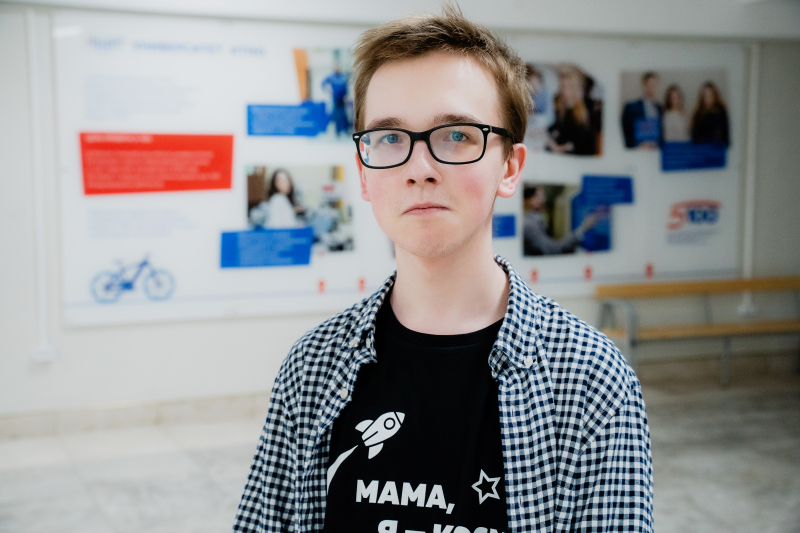
About the project
I participated in the competition with my game I hate this game – a 2D puzzle platformer with each level being a small puzzle or mini-game.
I have been playing computer games since childhood and at some point I decided to create something by myself that would tell my own story. When I was in the sixth grade, my older brother showed me Python and it was fun to do text quests in this language, but it did not support the graphic component that well. This is how I discovered the Unity game engine and not only is it free but also quite easy to learn.
I spent the next few years mastering game design. I took courses on Coursera and read books – the most popular was (and still is) the Art of Game Design: A Book of Lenses by Jesse Schell. I challenged myself to make a game that would make it on Steam. My colleague and I made it in a year and a half, but we also had an outsourced composer and we paid him with our saved pocket money.
First try and immediate success
In March 2019, the game was released on Steam and earned some hype: the Igromania and DTF magazines covered our story and the biggest Russian YouTube bloggers made reviews of our game. With the money we earned, we could buy good laptops and I traveled around Europe for a whole month. After that, I spent six months assisting the Russian studio AZAMATIKA, whose founder we met at DevGAMM. Together we worked on a game called Who is awesome. I generated and described ideas, thought over connections between game systems, and prototyped concepts.
New projects and plans
This summer, our five-member team started making a new game about a grandfather who needs to be lured to bed by scattering ducks around his apartment. It sounds crazy, but it is cool. In this project, I am engaged in both game design and team management. It is a real challenge for me as I have never done management before. My specialization is calculating the balance in games, game economics, and so on. Therefore, now I am focusing more on mathematics: probability theory and combinatorics, which are especially needed in my work. That's why I came to ITMO.
After I got admitted to the university, I came to my colleagues from the InfoLab club and suggested organizing a 10-week game development marathon with lectures from industry representatives, useful resources, hands-on exercises, etc. At the end of this marathon, each team will be able to make a small game.
Ksenia Novikova, Surgut
Enrolled in the Business Informatics program at the Faculty of Technological Management and Innovations
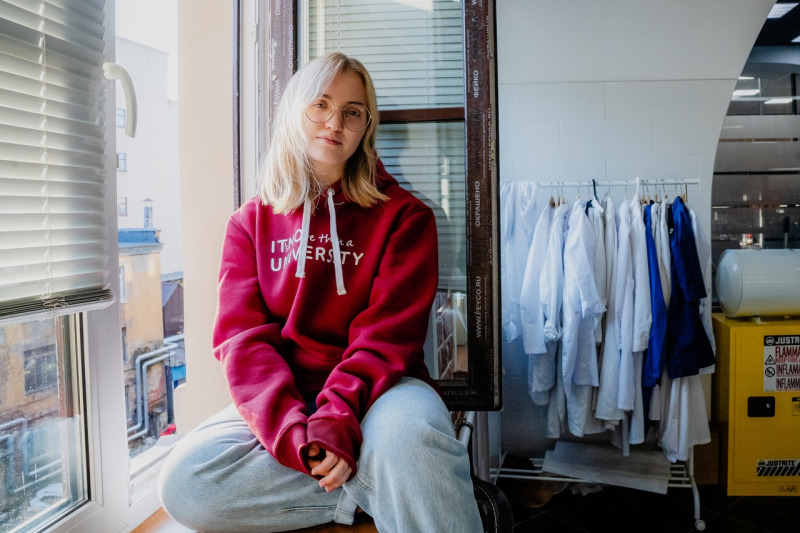
About the project
My research on the determination of iron content in drinking water before and after applying filters helped me enroll at the university. With this work, I participated in many conferences, including the national competition Step into the Future (third place). I have several other papers on the study of refined and unrefined oils, the determination of flavonoids in mint and currant leaves. Most of this research I did in the laboratories of the university in my hometown.
My path to science
I went to a completely ordinary school, but my chemistry teacher had a PhD degree. With her help, I started to take part in city, district, and university conferences since I was in sixth grade. As I gradually immersed myself in research, I learned more and more shocking facts about the environment and how much people damage their health daily. My research on drinking water influenced me the most.
Our region is considered one of the most polluted in the country and tap water there has such a high iron content that not all filters can cope with it. And some people generally drink raw tap water – it shocked me. And after all, we examined only iron – who knows what other harmful substances this water сontains.
I want to show people that there is a problem which even a school student can spot. And these problems need to be solved not only with the help of science but by making this common knowledge among the public. At the same time, I do not see myself as an ecologist or chemist, these are just my hobbies, and I do not want to devote my life to these fields.
Plans
I was eager to get into ITMO because of the program that teaches you to create your own business projects and startups. I want to do something that will help convey to people the need to take care of their health and the environment. But I don’t know what kind of project it will be yet. Right now, I plan to join the ITMO.Green club.
Arina Safonova, Tambov
Enrolled in the Neurotechnologies and Programming program at the Faculty of Software Engineering and Computer Systems

About the project
My project is called tuLEN (a pun on the Russian words “tulen”, meaning a seal, and “len”, meaning laziness – Ed.). It is a device for improving and controlling children's sleep in the form of a stuffed toy – a white seal. With the help of low-frequency rhythms, the device helps children fall asleep better; and two hours before the set wake-up time, it starts to glow, simulating dawn, to put the child into REM sleep for a more comfortable awakening. I got this idea when my nephews lived with my family and I really wanted to make them sleep better so they would bother everyone, including me, less.
Neuroprogramming and startup prospects
I went to the Quantorium children's technopark in Tambov where I learned how to solder, program, and handle Arduino microcontrollers. I've been studying programming since the ninth grade, and I've been doing this project for the last year. It is directly related to neuroprogramming, namely the effects of low-frequency rhythms on the brain and the effects of the color of dawn on various bodily functions: both physical and cognitive.
That’s why I entered this program: I want to modify the device and put it into mass production, as well as gain more knowledge in my chosen field. Many people are already asking me about it and looking forward to the start of sales. I already participate in the Preaccelerator program and plan to receive grants for the implementation of the project.
In the future, I want to do mobile development and make useful apps and devices.
Anton Khrustalev, Petergof
Enrolled in the Mechatronics and Robotics program at the Faculty of Control Systems and Robotics
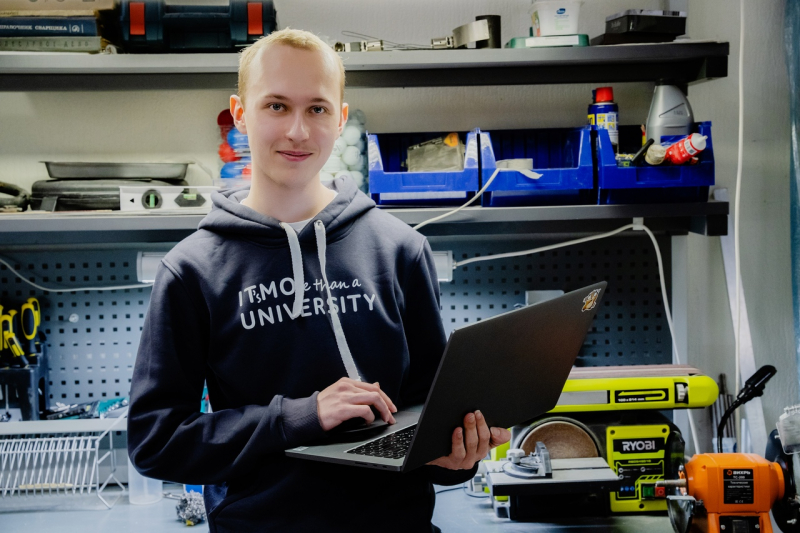
About the project
I enrolled at the university thanks to my 3D printed bionic hand project. With this project, I won the Baltic Science and Engineering Competition and made it to the finals of the Regeneron International Science and Engineering Fair 2020 (ISEF) but, unfortunately, it was canceled due to the pandemic.
This prosthesis has a special feature: it’s an open-source project and everyone can simply download files, print parts on a 3D printer, and assemble the prosthesis at home. At the moment, I do not want to create a commercial product, rather, I just want to show that even such seemingly complex devices can be made at home.
The future of bionic prostheses
In the future, I would like to change the market for bionic prostheses and create a niche for affordable yet high-quality devices. My prosthesis costs about $50, which is a few times less than the price of the cheapest plastic prosthesis on the market today. But, of course, it has a very limited service life, however, if used carefully, it can last long enough.
In addition to targeted use in a relatively short term, it can also be used to teach people how to use prostheses – after all, if anything, it will not be a pity to break it and the control methods are absolutely identical to brand-name prostheses.
Why did I start doing this? At school, I had a friend who since birth did not have one arm below the elbow. He told me about his problems: how difficult it was to find a suitable prosthesis, how expensive they are, how long it takes to wait for them, how difficult it is to get compensation from the state, and so on. Once, he asked me to find a model of some prosthesis and print it on a 3D printer; however, I could not find models online that, on the one hand, would have the necessary functions and on the other hand, would have the longevity, strength and a pleasant design. Therefore, I decided to develop my own prosthesis that would satisfy all the requirements (well, or almost all). It took me a little less than a year, but there is still a lot of work to be done before this prosthesis becomes close to perfect.
Prospects and his own robotics club
For now, I plan to continue to improve this project, but I am absolutely sure that during my studies I will come up with new and more global ideas. After all, ITMO makes it much easier to implement your ideas, and here you can also find like-minded people who will support your endeavors. I want to start a team, which is why I decided to found the robotics club Hi, tech! where students can solve various technical problems, as well as create and develop their own projects.
Ksenia Pishchik, Cheboksary
Enrolled in the Computer Technologies in Design program at the Faculty of Software Engineering and Computer Systems
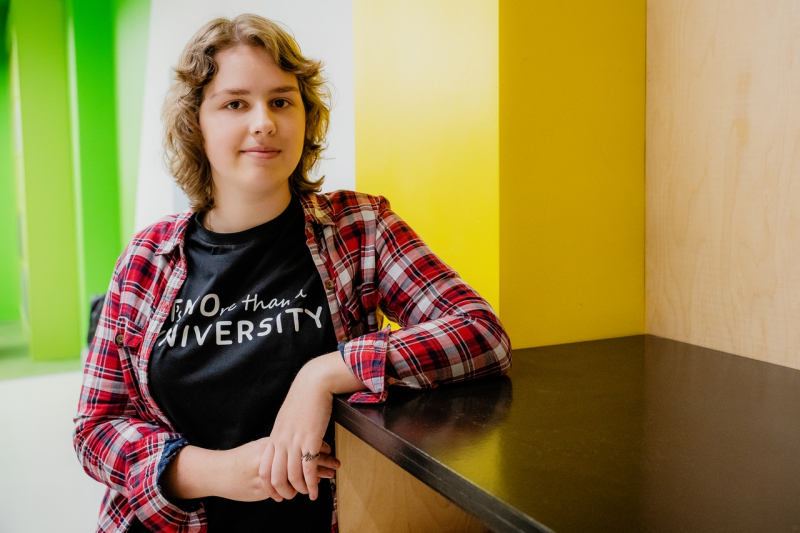
My path in life
I didn’t want to go to an art university because I don’t want to study academic drawing and painting. I think that all this is already outdated and I am sure that the future belongs to computer graphics and technologies.
I have been painting from a very young age, but I never went to art school. Instead, I attended a course at a Quantorium where I learned programming, 3D modeling, and basic animation. Around the same time, I got into the Artek camp for the first time and I liked it so much that I did my best to go there again. And since I already had some skills in animation, I decided to make a cartoon about my time in the camp. I sent it to the organizing committee, and in return received an invitation to the children's festival of animated films. It’s safe to say that this whole story has defined my way in life.
Plans
In my studies, I want to do not only animation, but in general everything related to design. For example, my fellow students and I are planning to develop a game and I will be in charge of animation. In general, I do a lot of things: I paint landscapes, make my own badges, and write music. Everything in my life ties together – I can do everything a bit, but it's all somehow connected.
Georgiy Kadantsev, St. Petersburg
Enrolled in the Applied Mathematics and Computer Science program at the Information Technologies and Programming Faculty
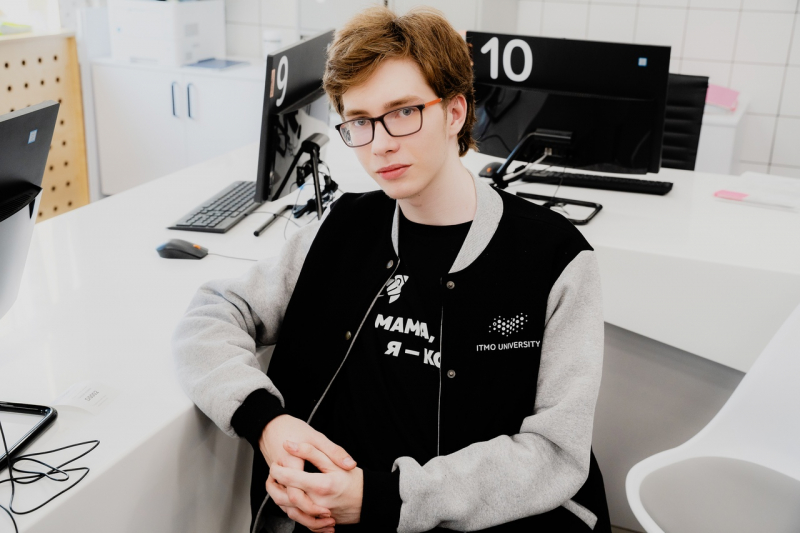
About the project
I submitted a project which I did in the tenth grade. This is a new mathematical result that we published in an article titled Research on Subquandles of Free Quandles. A quandle is a structure that embodies ideas about symmetry. This is a relatively new mathematical idea and it’s been around for no more than 80 years. With this article, I took part in the Sakharov Readings and in the Baltic Scientific Engineering Competition where I won a first-degree diploma. I also presented it at scientific conferences in South Korea, Malaysia, and Turkey.
My second, later project is devoted to a completely different topic – topological data analysis, which we studied in the context of cancer treatment and diagnosis. With this project, I participated in a scientific congress at ITMO and a number of other conferences, which I managed to attend before the pandemic.
My path to science
In school, I liked physics and mathematics and did a little programming but not too seriously. Then my family had the opportunity to move to St. Petersburg from my hometown of Stavropol and I went to a good school. In the eighth grade, I entered the Laboratory of Continuous Mathematical Education – in fact it was there that I fell in love with mathematics and began to study it seriously for the next four years. The program at ITMO was a logical next step. I am sure that here, I can get all the skills and knowledge that I need to work on topics that interest me – applied topology and data analysis.
Denis Eremin, Neryungri
Enrolled in the Refrigeration, Cryogenic Equipment and Life Support Systems program at the Faculty of Cryogenic Engineering

About the project
For the competition, I submitted a project for a station for processing PET plastic and defective models into filament, a raw material for 3D printing. In theory, you can use any kind of plastic, but I focused on PET because it is the most popular and we have the biggest problem with its disposal.
I have been working with 3D printers since the seventh grade as we had a laboratory at school. At first I was afraid of them – these are quite expensive devices, and if something breaks, you won’t be able to pay it back. But gradually I got involved, and by the tenth grade I was in charge of the laboratory. That’s how I got the opportunity to engage in my own projects – first as a hobby, and then working on serious and timely projects.
On the release of his own product series
Before that, I made a multifunctional charging station with which you can charge any device, including batteries for cameras, phones, laptops, and so on. This device even came out in a small series and in my city it was in demand. But I do not see it as a commercial product, rather purely a product for conferences: it earned me a win at the Step into the Future contest and helped me reach the finals of the UMNIK contest.
Prospects
So far, I do not know what projects I will work on – I must first deal with my studies, understand how hard it might be, and how much free time I will have left. But in the future, if I have any idea, I plan to go to Preaccelerator and do something worthwhile. In any case, I will try to make the best out of these four years. After all, ITMO has a lot of opportunities for implementing your own projects and there are many laboratories to cooperate with.
Elizaveta Tishina, Simferopol
Enrolled in the Information Security program at the Faculty of Secure Information Technologies
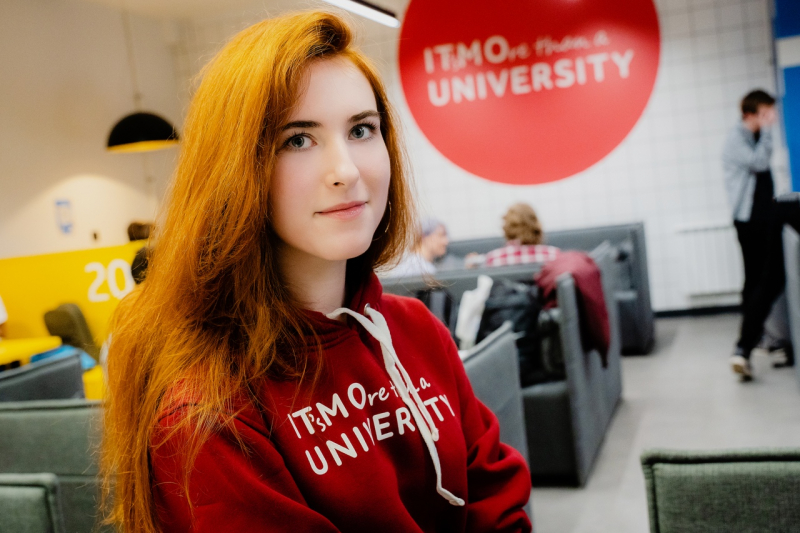
Information security and numerous competitions
I am a participant, finalist, and winner of various CTF information security competitions, as well as olympiads in artificial intelligence, information, and computer security. Two years ago, I tried to participate in the Cyber Challenges competition, a joint project of Rostelecom and the NTI Circle Movement which was then held for the first time. I liked it and decided to continue doing this.
I attended the winter school on information security at Innopolis University and met people with whom we later created a team and participated in all kinds of contests. For me, this is an interesting experience and practice in the field in which I intend to develop in the future.
I chose ITMO University because it is one of the largest technological universities capable of providing a proper education. Here you’ve got the SPbCTF community, good educational programs and professors, and many talented specialists and teams were formed precisely from ITMO students and graduates.
Daniil Gumin, Novozybkov
Enrolled in the Programming and Internet Technologies program at the Information Technologies and Programming Faculty
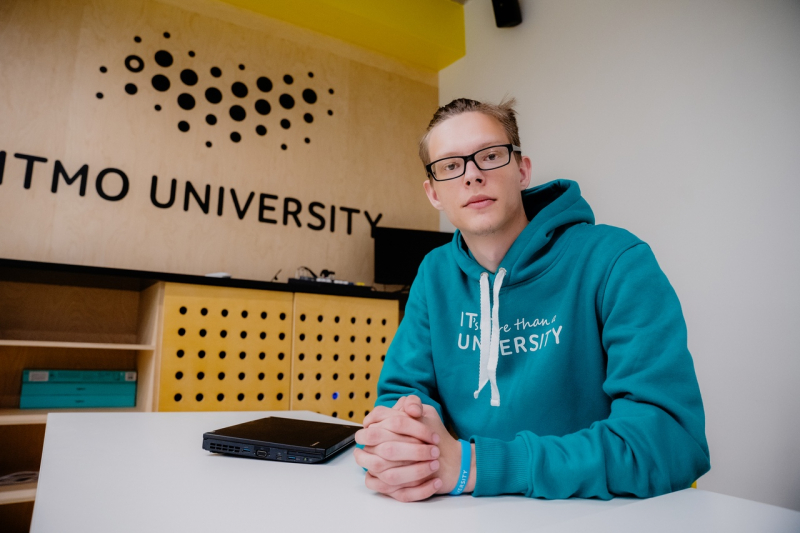
About the project
My project is the visualization of football statistics for analysts. The main problem is we usually have scattered data from various sources and it needs to be in one place, visually organized and easily understandable. Analysts themselves most often cannot do this because they are not good at programming.
My brother and I did this project together – we are both fond of football. He is working on a database in which all information about matches and players is stored, and I am working on a graphic library and a Telegram bot. Now, we are actively developing our project and adding new functions. So far, this is a project driven by enthusiasm, but we are slowly moving towards commercialization.
My path to programming
My brother inspired me to start programming because he is a lead developer at Tinkoff. But I started to get involved in this field in the seventh grade after the principal invited me to participate in a competition – as a result, I won first place in the city.
I tried my hand at different fields to find out which one is closer to me: I wrote games, made websites, created software, and participated in contests. The most interesting thing was working on our analytics project: I liked working on real problems and I also became curious about how data science and neural networks work – and I want to figure it out.
About admission and competition
I understood that even if I scored well on my USE, I would not enter the programs I wanted because ITMO is one of the best IT universities in Russia and the competition is very high here. I am glad that you can enter ITMO in a non-standard way. ITMO.STARS is a competition that allows you to enter one of the best universities in the country regardless of your USE scores but thanks to your real knowledge and skills.
Veronika Elkina, St. Petersburg
Enrolled in the Food Biotechnology program at the Faculty of Biotechnologies
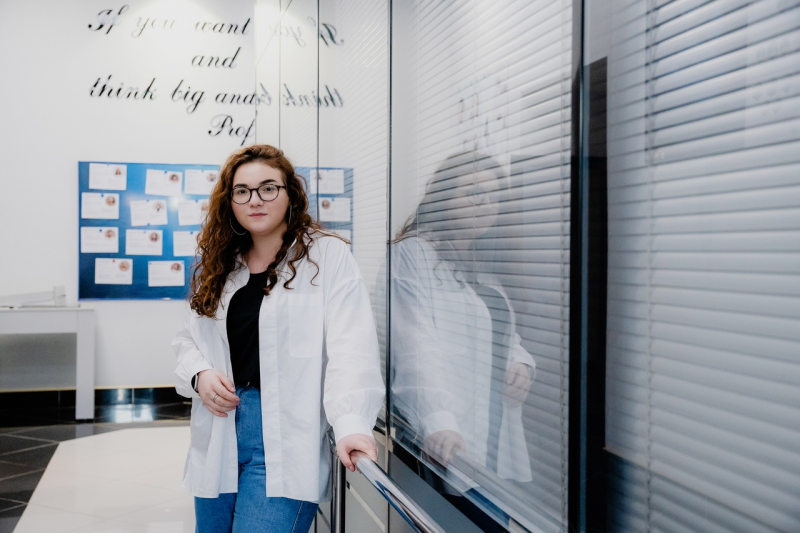
About scientific conferences and articles
I enrolled at the university thanks to my portfolio, which included participation in the Mendeleev 150 conference that took place at ITMO last year. There, I presented research on the geography of the discovery of chemical elements. In it, I talked about the interesting things that scientists encountered when discovering new chemicals.
From the ninth to the eleventh grade, I studied at a specialized school with a focus on the natural sciences, specifically medicine. My specialized subjects were chemistry, biology, and physics. My school works closely with ITMO University, so we had the chance to attend chemistry lectures at the university. There, Mikhail Kurushkin noticed me and invited me to participate in the Mendeleev 150 conference. And after a successful presentation, I was offered an internship at the university. This internship resulted in an article on the chemical element promethium which was published in Frontiers in Chemistry earlier this summer.
Prospects
I have always liked the natural sciences, but I chose technical chemistry over medicine. I plan to do science, but not fundamental chemistry because it seems rather boring to me, because you can't really come up with anything new there. Now there are a huge number of fields at the junction of several sciences – they are actively developing, but there are still many blank spots that can be explored and studied.
Iaroslav Abuzov, Khabarovsk
Enrolled in the Computer Science and Engineering program at the Faculty of Software Engineering and Computer Systems
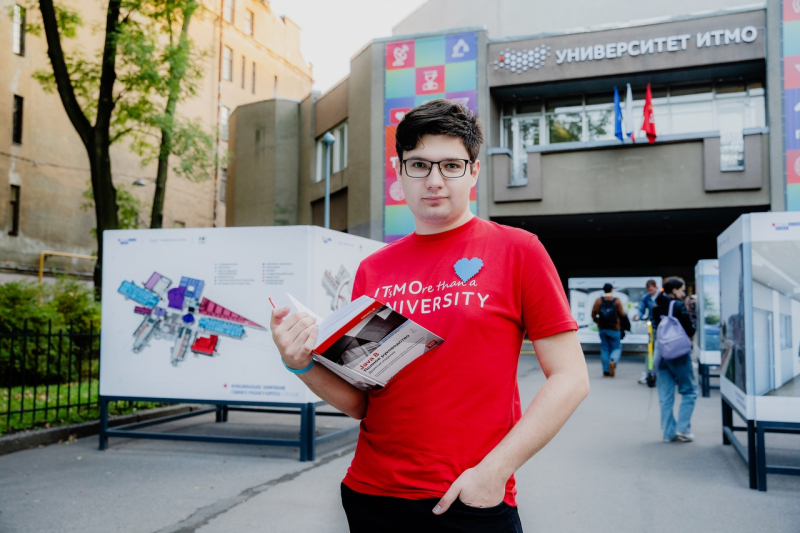
About the project
For the competition, I submitted a project on a software package for automating the work of a transport and cargo carriage. In simple words, this is a program for controlling the movement of a cable car which serves as a base and can be augmented with various modules. Due to this, we achieve versatility: this system can, for example, remove rubble and debris and then safely transfer trees in the forest and loads at a construction site. Or you can completely remove the cable car, put it on a monorail, and serve coffee at a cafe. In this case, the software will remain the same, and additional plugins can be connected for the modules to work.
I started this project in 2015 when I was in seventh grade. My father is a PhD in Technical Sciences from Pacific National University (PNU). He asked me to build a simple LEGO Mindstorms model to showcase my ideas on and was more than impressed with the result. He showed my design to the dean of his faculty and the head of the center of robotics, who allowed me to use university equipment like milling machines and 3D printers and offered to help. But I still did everything on my own: I continued to complicate the project, add new software technologies, replaced the plastic parts with iron ones, and so on.
About admission, competition and destiny
An advertisement for the ITMO.STARS contest accidentally popped up on the last day of accepting applications. I was preparing to go to Vladivostok, but Google decided otherwise.
At first, I wanted to go into software engineering, but I was persuaded to enter the Computer Science and Engineering program because it offers such a mix of programming and working with hardware. And I'm interested not only in programming but also in soldering, assembling various devices, working with microcontrollers, etc.
My other hobby is sound engineering. In my school, I was put in charge of the assembly hall and helping with the technical side of concerts. Unfortunately, all the equipment was in poor condition, and I always strive to do everything perfectly. For four years, I completely repaired everything there, updated it, and along the way, I understood all the details well. So now I can easily set up the equipment and host the concert. At ITMO, I plan to do something similar, because it all fascinated me a lot. But all this will be after the first year when I will get used to the educational process.
Leonid Goriachev, Sarov
Enrolled in the Applied Mathematics and Computer Science program at the Information Technologies and Programming Faculty
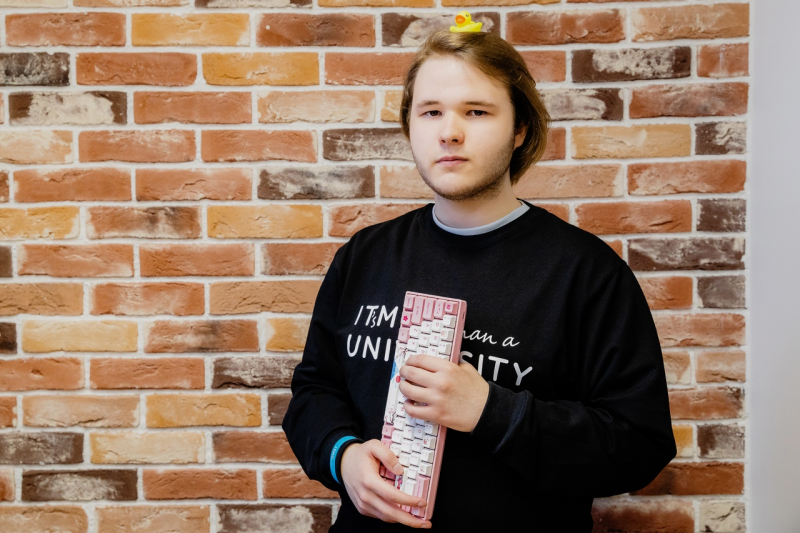
About the project
My project deals with the domestic market of the gaming industry. CS:GO has a wide range of in-game items that players actively trade on various platforms. Each item, depending on its rarity, has its own monetary equivalent, so daily transactions for colossal amounts take place in the Steam ecosystem, and a lot of sites provide trading services. Accordingly, there is a demand for applications that can properly visualize things before you purchase them, i.e. how they will look from different angles and under different lighting conditions.
I reversed the part of the game that is responsible for generating procedural textures and creating render panels that display previews of objects and made it so that, upon request, it was possible to unload images from them and assemble into a final image – with the correct viewing angles, lighting, etc. And all this without leaving the memory of the game. Two fairly large platforms have already implemented this system.
On computer games
I have been fond of computer games for a long time. Over the years I have more than once finished competitive seasons with a high ranking, occupying even the top 500 in Europe in some disciplines. But I have never been fascinated by esports, as I do not consider it promising. At some point, I became interested in trying to hack games. At first, I just wanted to see if I could do it, and later, I realized that it was possible to make good money on this.
I've been doing serious programming and big projects for the last two years. I'm also interested in trying my hand at machine learning and data science, but unfortunately, at the moment, all my tasks are related to reverse engineering. So first I will finish them and then switch to something new. My goal is to get an internship at the largest company that sells gaming equipment because they have departments that work with data science.
About admission and program
I learned about ITMO from my friends, and this subject area is the only one where I like the program. There is nothing extra, only the most useful subjects, and yet there is no narrow focus which completely suits me, as I would not want to get attached to one thing and study it exclusively for four years.
